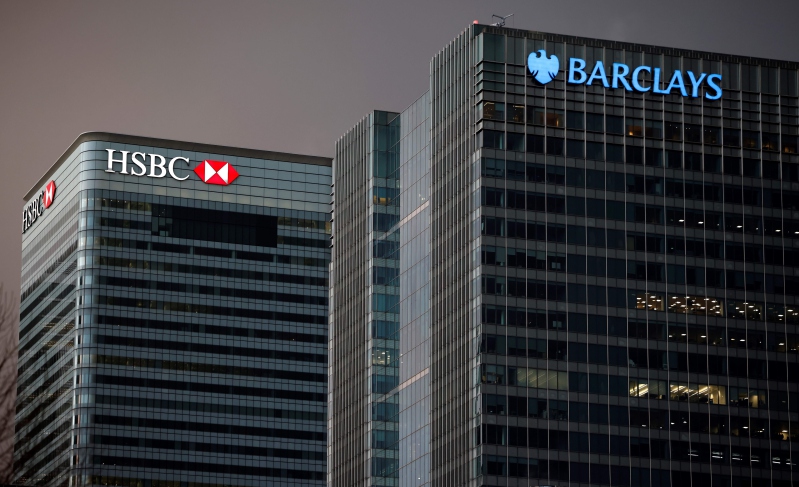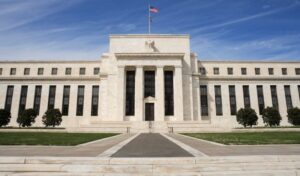
Replacing the primary international interest rate poses risks, but policymakers are ready for the challenge.
The global financial system is sitting on a ticking time bomb. But the regulatory bomb squad has been preparing for this moment for nearly a decade.
On December 31, 2021, U.K regulators will begin an eighteen-month process to cease publishing the London Interbank Offering Rate (LIBOR), which many journalists refer to as “the world’s most important number.”
LIBOR is the primary international interest rate. It is tied to over $200 trillion of financial transactions in the United States and $300 trillion worldwide. LIBOR comes in 35 different maturities and currencies, the most prominent of which are based on the U.S. dollar (USD). Between December 2021 and June 2023, U.K. regulators will gradually stop publishing the 35 LIBOR rates, with the USD rates ceasing at the end of this period.
U.K. regulators determine LIBOR by periodically surveying British banks and averaging the rates they pay to borrow money. When LIBOR ceases at the end of this year, all contracts that rely on LIBOR could be called into question. If LIBOR disappears without a plan to transition the global economy to other interest rates, the world could face a financial system meltdown.
Fortunately, U.S. and foreign regulators have been working on a smooth transition away from LIBOR for nearly a decade. Regulators began strategizing for a LIBOR transition in 2012 after Barclays and other banks manipulated the interest rate.
Banks must voluntarily report their interest rates for British regulators to set LIBOR. Many banks do not borrow frequently enough to know their exact interest rate, so they estimate. To make matters worse, over time fewer banks have chosen to report LIBOR data. These circumstances allowed Barclays and a few other banks to reduce LIBOR artificially and turn a profit by reporting false interest rates to British regulators.
Following the Barclays scandal, governments began searching for alternative interest rates that are less susceptible to manipulation. U.S. regulators collaborated with large banks to form a working group, called the Alternative Reference Rates Committee (ARRC). ARRC proposed that U.S. financial institutions replace USD LIBOR—based on the U.S. dollar—with the Secured Overnight Funding Rate (SOFR).
SOFR is the interest rate banks pay to borrow U.S. dollars overnight through a transaction known as a repurchase agreement, where the lender receives U.S. Treasury bonds as collateral for the loan. The New York Federal Reserve publishes SOFR each day based on data it receives from independent third-parties, such as the Depository Trust & Clearing Corporation. This data process means that SOFR does not depend on banks voluntarily reporting their interest rates. In addition, SOFR involves more than 100 times the number of transactions as LIBOR, allowing the New York Federal Reserve to base SOFR on actual borrowing costs, rather than estimated costs. These distinctions make SOFR more reliable and harder to manipulate than LIBOR.
One issue with SOFR is that it only measures interest rates to borrow U.S. dollars, not other currencies. Most global financial transactions have relied on USD LIBOR because of its prominence. But many countries are now replacing all LIBOR rates with their own domestic interest rates. This can create challenges for financial transactions that span multiple jurisdictions. Although the financial system has experience transacting with multiple interest rates, it has never experienced anything on this scale. Without a primary global interest rate, banks may struggle to manage cross-border financial transactions.
Within the U.S. financial system, which is likely to adopt SOFR as the primary interest rate, the transition still presents challenges. Many of the $200 trillion of LIBOR-based contracts in the United States will terminate before USD LIBOR ceases in June 2023. Other transactions contain “fallback language”—clauses in LIBOR-based contracts that will automatically adopt a different interest rate when LIBOR ceases. About $10 trillion, however, will continue past June 2023 without fallback language. If this happens, financial institutions could restrict lending to avoid the risk of default, parties could overwhelm courts with litigation over contracts, and banks could harm consumers by replacing LIBOR with an interest rate that charges consumers more money.
U.S. regulators and legislators are moving quickly to prevent this outcome. Federal regulators issued guidance encouraging banks to stop using LIBOR in new contracts and to amend existing contracts that rely on LIBOR. Although this recommendation is not technically mandatory, regulators have warned banks that if they create LIBOR-based contracts after December 31, 2021, they will violate their “safety and soundness” obligation, and regulators will take supervisory action against them.
Regulatory action alone, however, is not enough to protect the $10 trillion of LIBOR-based contracts currently at risk. That is why New York state enacted legislation in April 2021, mandating that LIBOR-based contracts in New York adopt SOFR after December 31. This law will add significant clarity and stability to the U.S. financial system because New York law governs a large portion of the country’s financial contracts.
Many federal officials argue that state legislation is insufficient. U.S. Treasury Secretary Janet Yellen and Federal Reserve Chair Jerome Powell have called on the U.S. Congress to act. Advocates for federal LIBOR legislation contend that not all states will address the issue by the end of 2021, creating confusion about contracts under the jurisdiction of multiple states. In addition, the federal Trust Indenture Act prohibits states from amending private loan agreements without the consent of creditors. New federal legislation could address this problem by creating an exception to the Trust Indenture Act for LIBOR-based contracts.
In response to these concerns, Congress appears to be taking action. U.S. Representative Brad Sherman (D-Calif.), chair of the U.S. House Financial Services subcommittee overseeing capital markets, sponsored the Adjustable Interest Rate (LIBOR) Act of 2021 that would replace LIBOR with SOFR in contracts without fallback language after December 31. The bill would also create an exception in the Trust Indenture Act for LIBOR-based contracts. Given the strong bipartisan support for federal LIBOR legislation, members of Congress are optimistic that they can pass legislation before significant problems arise when the USD LIBOR rates cease in June 2023. Indeed, the U.S. House Committee on Financial Services recently approved Sherman’s proposal, pointing the way toward a final bill.
Despite all that is at stake, the LIBOR transition has not made headlines this year because regulators and legislators at the state, federal, and international level have anticipated issues with the transition and are working swiftly to address them. Banks, consumers, and regulators hope that the LIBOR transition remains smooth and uneventful.



